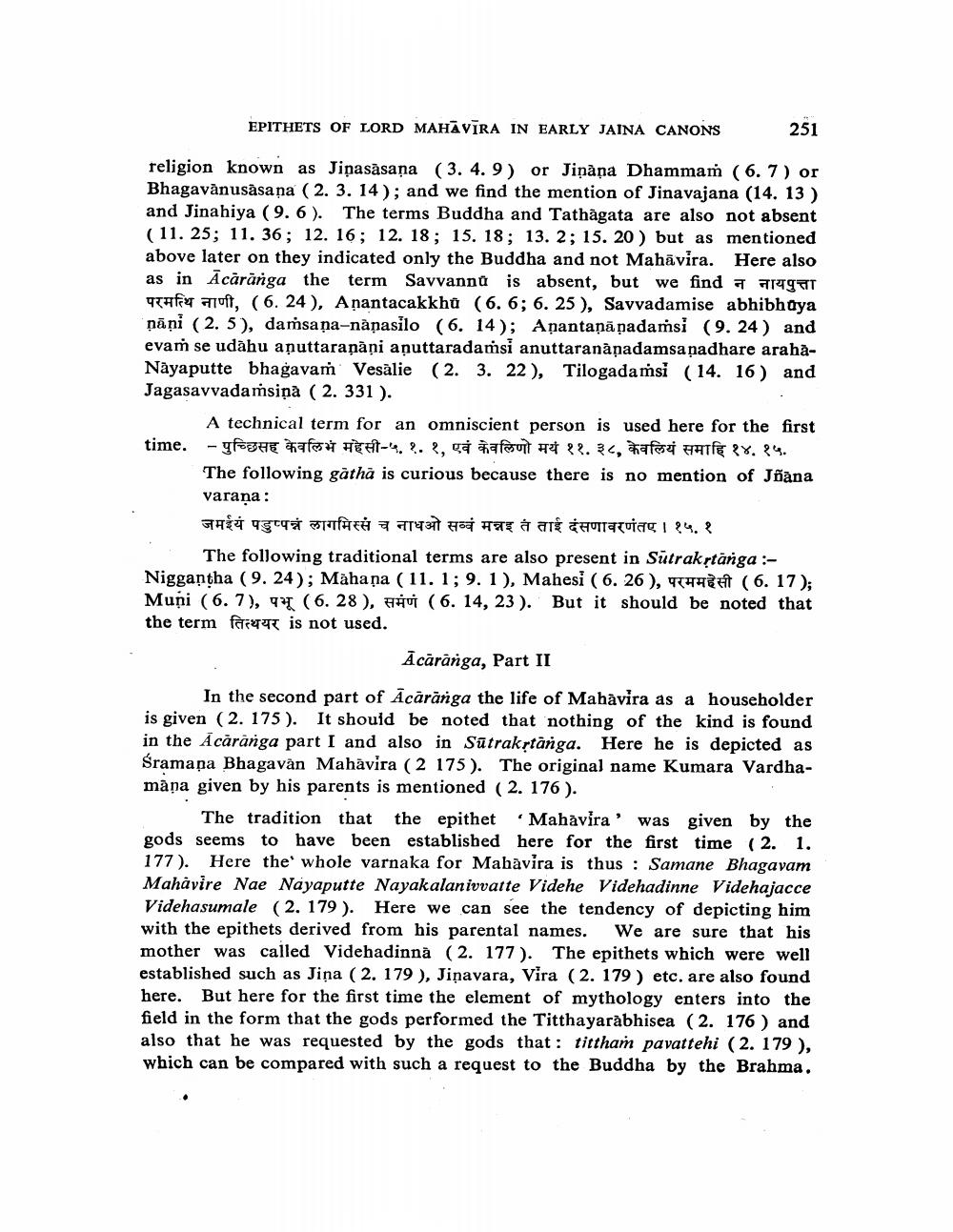Book Title: Epithets Of Lord Mahavira In Early Jaina Canons Author(s): Dalsukh Malvania Publisher: Dalsukh Malvania View full book textPage 5
________________ EPITHETS OF LORD MAHĀVĪRA IN EARLY JAINA CANONS 251 religion known as Jipasāsaņa (3. 4. 9) or Jiņāņa Dhammam (6.7) or Bhagavānusāsaņa (2. 3. 14); and we find the mention of Jinavajana (14. 13 ) and Jinahiya (9. 6). The terms Buddha and Tathāgata are also not absent (11. 25; 11. 36; 12. 16; 12. 18; 15. 18; 13. 2; 15. 20 ) but as mentioned above later on they indicated only the Buddha and not Mahāvira. Here also as in Ācārănga the term Savvannû is absent, but we find a ROTT aft Fluft, (6. 24), Anantacakkhū (6. 6; 6. 25), Savvadamise abhibhaya pāņi (2. 5), damsaņa-nanasilo (6. 14); Apantaņā padaṁsi (9. 24) and evam se udāhu aņuttaraṇāņi aņuttaradamsi anuttaranāņadamsanadhare arahaNayaputte bhagavam Vesàlie (2. 3. 22), Tilogadaṁsi (14. 16) and Jagasavvadamsiņa ( 2. 331 ). A technical term for an omniscient person is used here for the first time. - yosh as EH-.?., gaat uit het 82. 3, hafa hf 28.84. The following gātha is curious because there is no mention of Jõāna varana : जमईयं पडुप्पन्नं लागमिस्सं च नाधओ सव्वं मन्नइ त ताई दंसणावरणंतए । १५.१ The following traditional terms are also present in Sūtrakstānga :Niggantha (9. 24); Mahaņa (11.1;9. 1), Mahesi (6. 26), THE (6. 17); Muņi (6. 7), 17(6.28), FHU (6. 14, 23). But it should be noted that the term facerut is not used. Ācāranga, Part II In the second part of Ācāranga the life of Mahavira as a householder is given (2. 175). It should be noted that nothing of the kind is found in the Acaranga part I and also in Sūtrakstānga. Here he is depicted as śramapa Bhagavan Mahavira (2 175). The original name Kumara Vardhamāna given by his parents is mentioned (2. 176 ). The tradition that the epithet Mahavira' was given by the gods seems to have been established here for the first time (2. 1. 177). Here the whole varnaka for Mahavira is thus : Samane Bhagavam Mahavire Nae Nayaputte Nayakalan ivvatte Videhe Videhadinne Videhajacce Videhasumale (2. 179). Here we can see the tendency of depicting him with the epithets derived from his parental names. We are sure that his mother was called Videhadinnā (2. 177). The epithets which were well established such as Jiņa (2. 179 ), Jiņavara, Vira (2. 179 ) etc. are also found here. But here for the first time the element of mythology enters into the field in the form that the gods performed the Titthayaràbhisea (2. 176 ) and also that he was requested by the gods that: tittham pavattehi (2. 179), which can be compared with such a request to the Buddha by the Brahma.Page Navigation
1 ... 3 4 5 6 7
